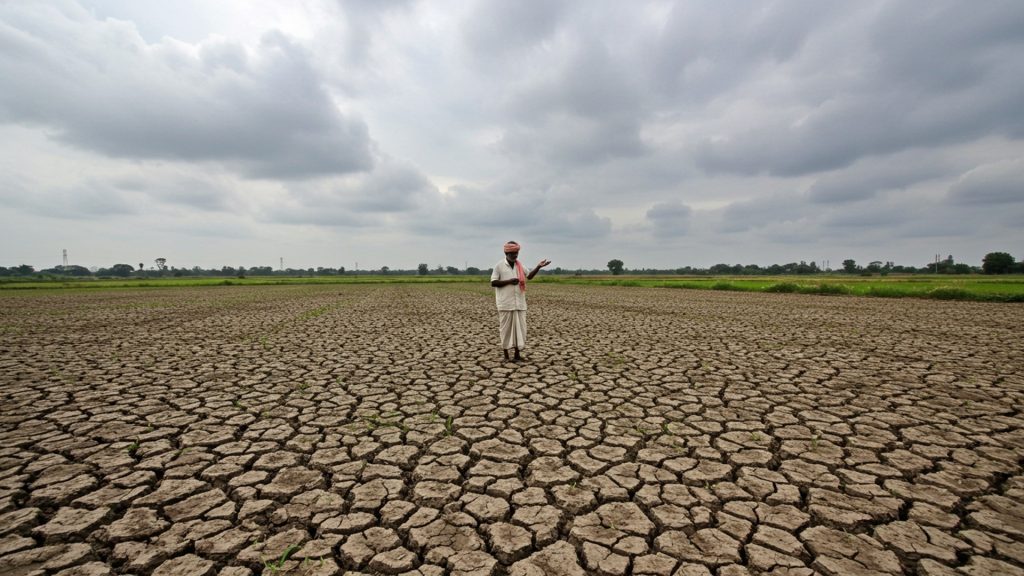Farmers in Telangana are in deep trouble as the crucial Kharif planting season faces severe setbacks right now. Erratic monsoon rains, coming in fits and starts, are leaving fields dry and hopes dim. At the same time, a sudden shortage of urea, a vital plant food, adds another heavy burden, making it nearly impossible for many to prepare their land or sow seeds. This twin crisis threatens a big drop in food production and could badly hurt the money farmers earn, raising fears about the state’s agriculture future. The situation demands urgent action as the window for successful planting quickly closes, putting the livelihoods of thousands on the line.
Farmers Face Delays in Sowing
The start of the Kharif farming season in Telangana has faced several challenges, causing delays for many farmers. By the middle of August, sowing had gone beyond 1. 10 crore acres across the state. This number is higher than the 73. 65 lakh acres recorded last year at the same time. But, this progress is mainly seen in areas that depend only on rain. The state government had aimed for a total Kharif farming area of 152 lakh acres for the year. Despite the overall increase in planted area, some key crops are still far behind their targets. Paddy, which is a very essential crop, has seen only 45 lakh acres planted. This is much less than the target of 66 lakh acres for paddy, showing a drop of 22 lakh acres compared to the 62. 13 lakh acres planted last year. This slow start for paddy is largely due to not enough rain early in the monsoon season, which meant only 36,300 acres were planted by mid-July. Other crops, But, are doing better. Cotton farming has shown good progress, with 46 lakh acres already covered, almost reaching its goal of 50 lakh acres. Maize and horticultural crops are also moving forward steadily, with 18 lakh acres of maize and 9 lakh acres of horticultural crops planted. Farming in some districts like Suryapet and Mahabubabad is still slow. This is because the Kaleshwaram Lift Irrigation Project pump houses are not working. water levels in reservoirs are low. Despite these issues, officials have stated that they are hopeful that planting will continue until late August.
Rainfall Not Enough for All
The southwest monsoon for the current year, 2025, has been inconsistent across Telangana. From June 1 to August 17, the state received a total of 549. 8 millimeters of rain. This is 15 percent more than the normal amount of 478. 1 millimeters for this period. But, this overall positive number hides big differences in rainfall from one district to another. Some areas, such as Mahabubnagar, Wanaparthy. Nagarkurnool, have received much more rain than usual, with increases of 74 percent, 62 percent. 77 percent above normal, respectively. But at the same time, four other districts have faced less rain than they need. This uneven distribution means that while some farmers have enough water, others are struggling. The early lack of rain in many areas was a major reason why planting was delayed. There was hope for better rain from August 4 onwards, as weather experts predicted a new active monsoon period. They said that widespread rains were expected. August should make up for the earlier low rainfall, possibly even bringing excess rain by mid-August. Forecasters also watched for a possible low-pressure system between August 14 and 17, which could bring heavier rainfall to parts of Telangana and its capital, Hyderabad. Looking back, the 2024-25 monsoon season ended with a 32 percent surplus in rainfall for Telangana. The state received an impressive 1,215. 9 millimeters of rain against an average of 918. 9 millimeters for the year. Even with this overall high amount, the distribution of rain was not even across all districts.
Getting Fertilizers is Hard
Farmers in Telangana are facing a major challenge due to a severe shortage of urea, a vital fertilizer needed for healthy crop growth. This lack of urea is threatening to reduce crop yields by 10 to 15 percent, especially for essential crops like paddy and cotton. As a result, many farmers are forced to buy urea at much higher prices in the black market to save their crops. The difficulty in getting urea has led to frustrating situations for farmers. They are seen waiting in long lines before dawn, sometimes even fighting at distribution centers to get their share. In some places, farmers are leaving their footwear or even their land ownership documents to hold their spot in queues. Farmers in districts like Rajanna-Sircilla, Karimnagar. Khammam have reported spending many hours at fertilizer shops and cooperative societies, often returning with very little or nothing at all. Some farmers reported only getting one or two 45-kg urea bags per Aadhaar card, which is far less than what they need. To get urea, official agencies are now asking for Aadhaar cards and Pattadar passbooks for checks. Telangana’s Agriculture Minister has openly blamed the central government for not sending the promised amounts of urea. The Minister stated that for the 2025 Kharif season, 9. 80 lakh metric tonnes (LMT) of urea were supposed to be given to the state. But, only 4. 50 LMT were supplied between April and July. This has resulted in a shortfall of 5. 30 LMT. For August, only 1. 70 LMT has been allotted against a need of 3. 50 LMT, showing a 35 percent shortage. A Member of Parliament from Bhongir also made similar claims, saying that 6. 60 lakh metric tonnes of urea should have reached the state by July 2025. On the other hand, the Union Minister of State for Chemicals and Fertilizers has said that there has been “adequate” urea available in Telangana for the Kharif 2025 season. Despite this statement, the reality on the ground shows widespread scarcity. Farmers’ groups have also criticized the push for nano urea, saying it washes away easily with rain and that they need regular urea. Agricultural experts have warned that if urea is not applied in time, especially for paddy, after the third week of August, it could cause lasting damage to the crops.
Government Takes Steps and Challenges Remain
The state government of Telangana had set an ambitious target for the total area to be planted during the Kharif season, aiming for 152 lakh acres. To support farmers, the government had also made promises like waiving crop loans up to two lakh rupees and providing financial help through the Rythu Bharosa scheme. But, the government is currently facing difficulties in finding enough money to put these plans into action and transfer the promised amounts into farmers’ bank accounts, especially as the Kharif season has already started. Farmers have also been affected by delays in getting the Minimum Support Price (MSP) bonuses for their Rabi 2025 crops. This has left many farmers with less cash in hand, making it harder for them to manage their farming activities. This financial strain has caused some farmers to choose crops that need less water, such as maize, which is less risky when rainfall is uncertain. While there have been some reports of efforts to manage the urea shortage, such as redistributing existing stock, the widespread complaints from farmers show that the problem continues. The ongoing issues with inconsistent monsoon rains and the shortage of vital fertilizers mean that farmers are facing a tough time during this crucial planting season. These challenges highlight the need for steady support and timely solutions to ensure that farmers can grow their crops successfully and maintain their livelihoods.

